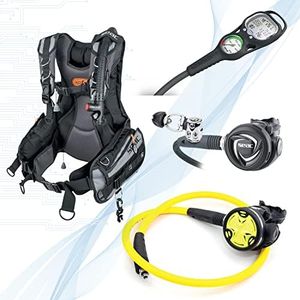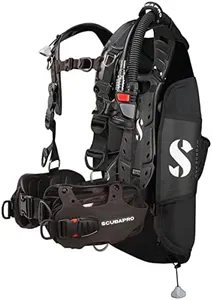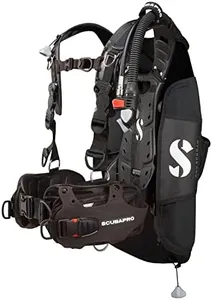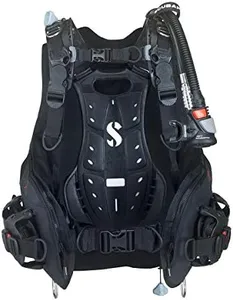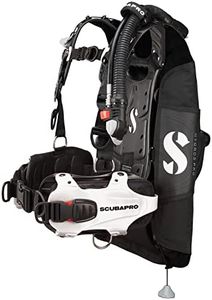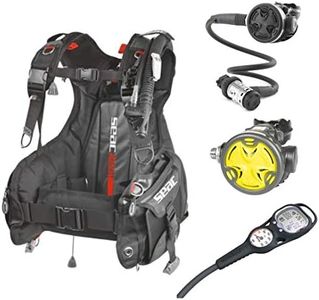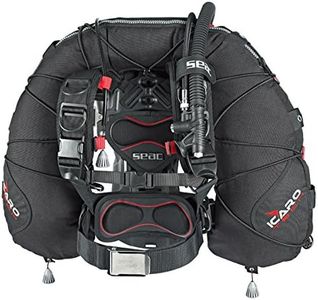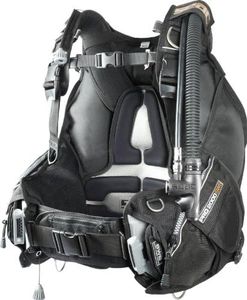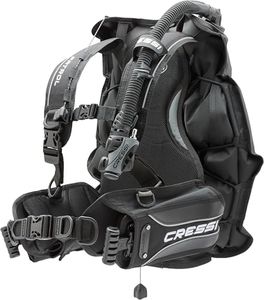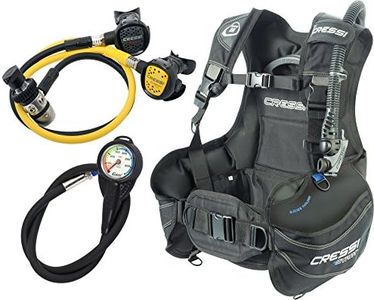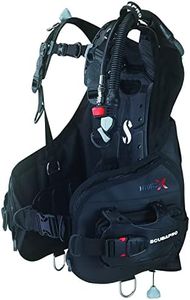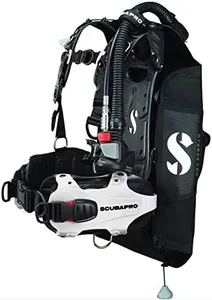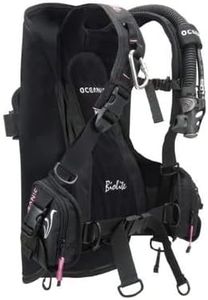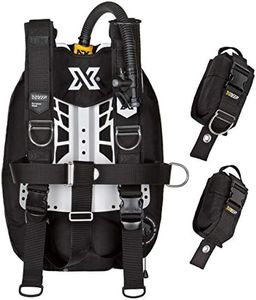We Use CookiesWe use cookies to enhance the security, performance,
functionality and for analytical and promotional activities. By continuing to browse this site you
are agreeing to our privacy policy
10 Best Diving Bcd
From leading brands and best sellers available on the web.Buying Guide for the Best Diving Bcd
Choosing a Buoyancy Control Device (BCD) for diving is an important decision because your BCD is a key piece of dive gear that provides comfort, buoyancy, and safety underwater. When picking a BCD, you want something that suits your diving style, fits your body well, and has the features you need without being unnecessarily complicated or bulky. Understanding each key specification will help you decide which model is the best match for your diving activities.Type/Style (Jacket, Back-Inflate, Wing)BCD types include jacket style, back-inflate, and wing designs. This spec describes how the BCD fits and where it provides buoyancy. Jacket BCDs are like vests that distribute air around the front and sides, offering stability and ease of use, making them great for beginners or casual divers. Back-inflate and wing styles place the air bladder behind you, which improves horizontal trim and is favored by more experienced or technical divers for comfort and streamlined movement. Your choice should depend on your experience level, the type of diving you plan to do, and your personal comfort preference.
Fit and SizingFit determines how comfortably the BCD sits on your body and how well it secures your gear. BCDs come in various sizes, and even with size charts, fit can vary between brands. A BCD that's too loose can shift, making you unstable underwater, while one that's too tight will be uncomfortable. The best fit is snug but not restrictive, and allows easy adjustment for exposure suits. Whenever possible, try on different sizes in person with your usual dive gear, and adjust the straps to simulate real use.
Lift CapacityLift capacity refers to how much weight a BCD can help you float or control at the surface or underwater. Lift is measured in pounds or kilograms, and the right amount depends on your body size, the weight of your gear (especially if you dive with thick wetsuits or in cold waters), and your typical dive setup. Lower lift (around 20-30 lbs) is generally fine for warm water, lightweight setups, while higher lift (40 lbs or more) is better for cold water, heavy gear, or technical diving. Think about where and how you dive most often to choose an appropriate lift range.
Weight System (Integrated vs. Weight Belt)Many modern BCDs have integrated weight systems, which means you can place weights into pouches on the BCD instead of wearing a separate belt. Integrated weights can improve comfort and make ditching weights in an emergency easier, but they are slightly heavier and sometimes less versatile than using a traditional weight belt. If you want convenience and streamlined gear, integrated is a good choice, but for those who want maximum flexibility or travel light, a separate weight belt might be preferable. Consider your diving habits and what feels more comfortable for you.
Number of Dump Valves and Inflation SystemsDump valves allow you to release air from the BCD easily and help control your buoyancy. Most BCDs come with at least two (usually at the shoulder and lower back), but advanced or technical models might have more options or different placements. More valves can offer flexibility for different body positions or dive conditions, but add complexity. Similarly, inflation systems can be standard (oral and power inflator) or have extra features like redundancy for technical use. Beginners should focus on reliable, easy-to-reach controls, while more demanding divers may want added options for advanced diving.
Pockets and D-RingsPockets and D-rings offer storage and attachment points for accessories like lights, reels, or slates. The size, number, and location of pockets and D-rings vary greatly between models. If you want to carry lots of gear, look for multiple, easily accessible pockets and sturdy D-rings. If you prefer minimalism, a few smartly placed rings and a single pocket may be enough. Think about your usual accessories and pick a configuration that makes carrying and accessing your gear easy and safe for you.
Travel Friendliness/WeightTravel-friendly BCDs are lighter and more compact, making them easier to pack and carry. Heavier, bulkier BCDs may give extra features or durability, but can be challenging to bring on trips. Lightweight models are perfect for frequent travelers or tropical divers, while local or technical divers may prefer something more robust. Consider how often and where you'll use your BCD, and balance comfort, durability, and packability to fit your travel needs.
